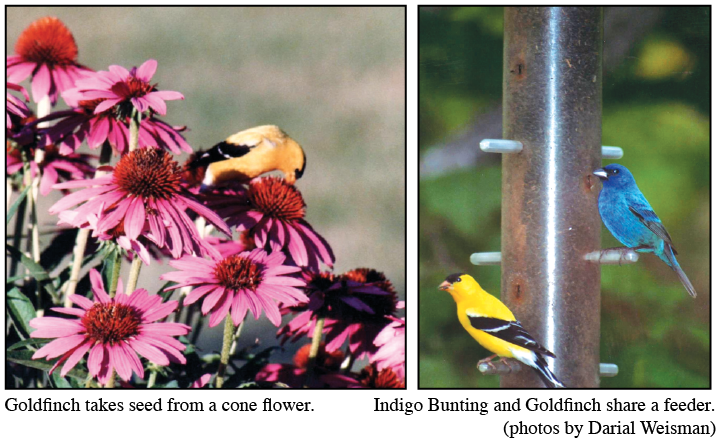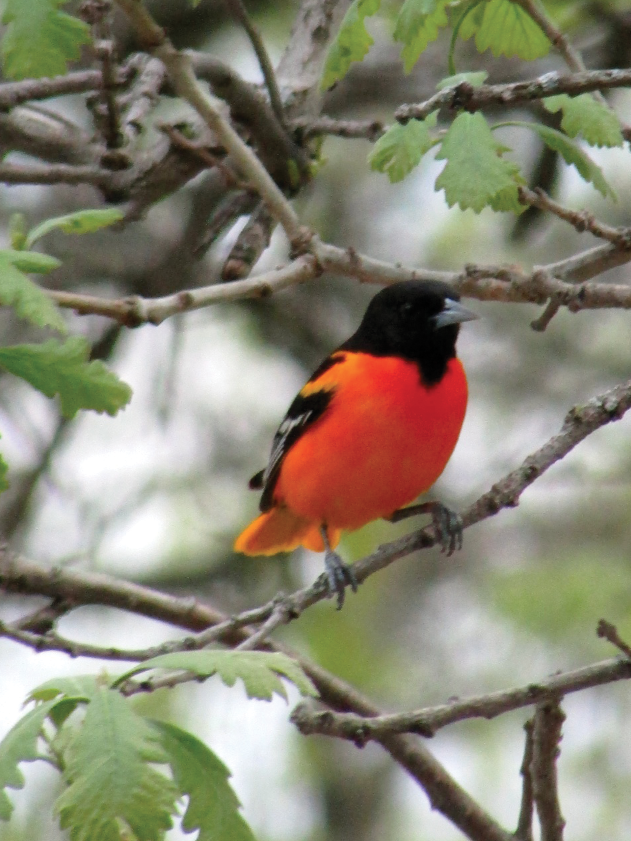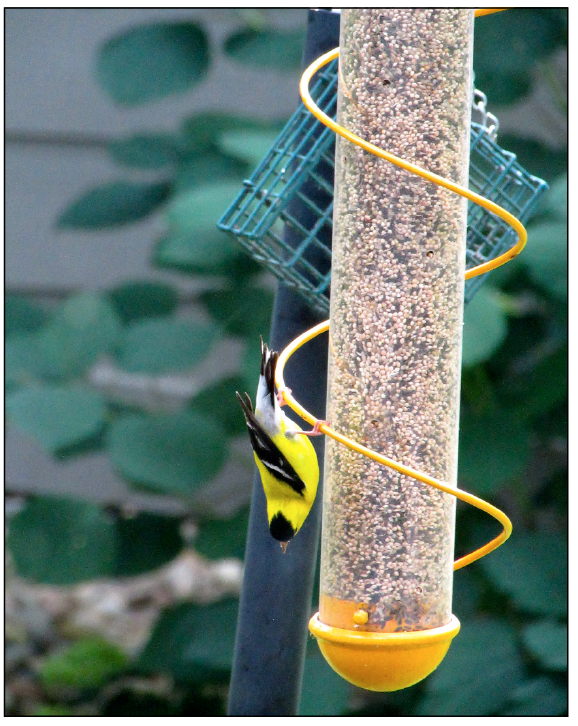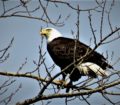By Darial Weisman
 Establishing a backyard bird feeding area can bring hours of pleasure. The good thing (according to my husband) is that our feeding station does not take up a big area, probably only a 10’ x 10’ area. However, the feeding station is strategically placed about 15 feet away from our sunroom on the south side of the house. In that way, we can see all of the action, but they are close to our back door so that they are easily accessible for filling. By keeping the feeders filled and when they need it cleaned so that the seed does not become mildewed, we get to enjoy the songbird action year-round.
Establishing a backyard bird feeding area can bring hours of pleasure. The good thing (according to my husband) is that our feeding station does not take up a big area, probably only a 10’ x 10’ area. However, the feeding station is strategically placed about 15 feet away from our sunroom on the south side of the house. In that way, we can see all of the action, but they are close to our back door so that they are easily accessible for filling. By keeping the feeders filled and when they need it cleaned so that the seed does not become mildewed, we get to enjoy the songbird action year-round.
Right now we have a huge variety of songbirds coming to our feeders. The reason is the variety of feeders. We have two types of platform feeders, tube feeders with two different types of seed, a jelly feeder, peanut feeders, suet feeders and sugar water feeders for hummingbirds. And, yes, that is all in that 10’ x 10’ area! Each type of bird has its own personality and eating style, so yes there are lots of smiles as we watch their antics.
If someone were to ask me which bird is the most striking of all those that come to our feeders, I would have to say the Indigo Bunting. Yes, the Cardinal is a brilliant red, and the Goldfinch has a strikingly bright yellow color and the Chickadee’s cap is soooo black, but the Indigo, oh my!
First off, they are not as common at our feeders as some other birds, so seeing one is a real treat.
The Indigo is almost cobalt blue in color, and in low light may even appear to be black. They have a somewhat stocky, round build and are about five inches from head to tail. The brilliant blue color of the male makes it easy to identify. However, the females are mostly brown and I am not sure that I’ve seen, or at least identified a female Indigo.
My husband and I first had the pleasure of seeing an Indigo Bunting while on a walk. It was a male, and it was singing the most beautifully sweet song, which drew my attention way up to the telephone wire where he was perched. Talk about shrieking with excitement! From that time on, it was my obsession to bring this little gem to our feeders.
My research found that these birds are summer residents in our area of northwest Iowa. They migrate here in mid-May from their winter home in Mexico and Central and South America.
The Indigo Bunting nests in rural thickets, open woodlands and fields. Their nests are cup-shape and made of dried grasses and weeds.
Indigos provide valuable service to the environment by eating flies, mosquitos and other insects, as well as seeds, grasses, thistle and weed seeds.
Enticing them to the feeders
We have attracted this bird to our yard with a thistle feeder. We feed a finch mixture of nijer thistle seed, canary seed, millet and sunflower hearts. Most of the time we get goldfinches at the feeder, sometimes several at a time. However, every once in a while the Indigo shows up and steals my heart! The good news is that they will readily feed right along side of the goldfinch. Because they are also insect eaters, feeding meal worms may draw the Indigo. However, my husband draws the line that that one. He says, “Meal worms are for fishing!” I really feel that they are more of a shy bird, and that is one of the reasons that we see them so infrequently.
Despite the fact that water is strongly encouraged to draw birds to your feeding area, Indigo Buntings derive most of their fluids from their diet. Still, we keep two fountains going and a bird bath for all of our feathered visitors.
Whatever you do, I hope you consider making a backyard bird sanctuary for your songbirds. .
















